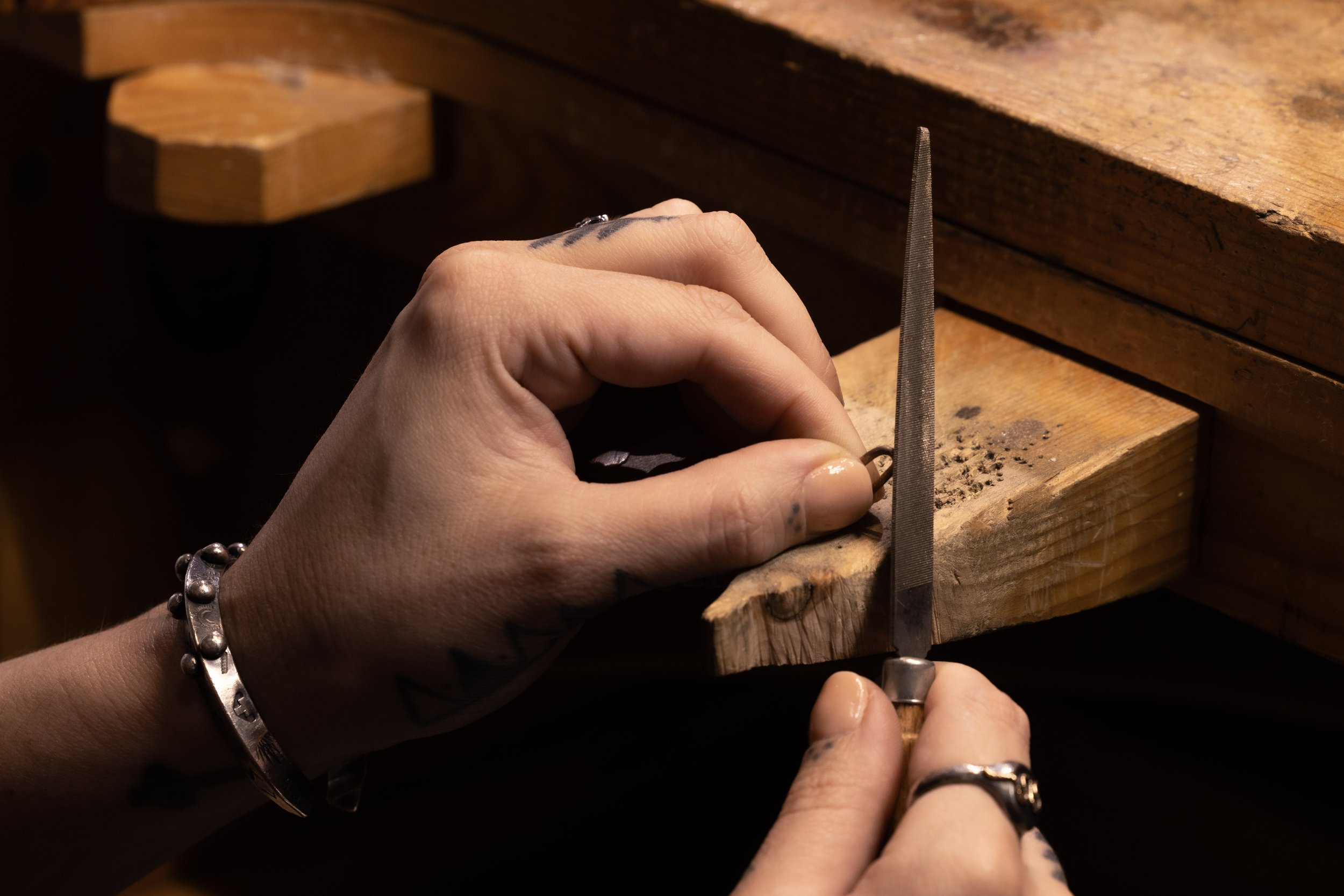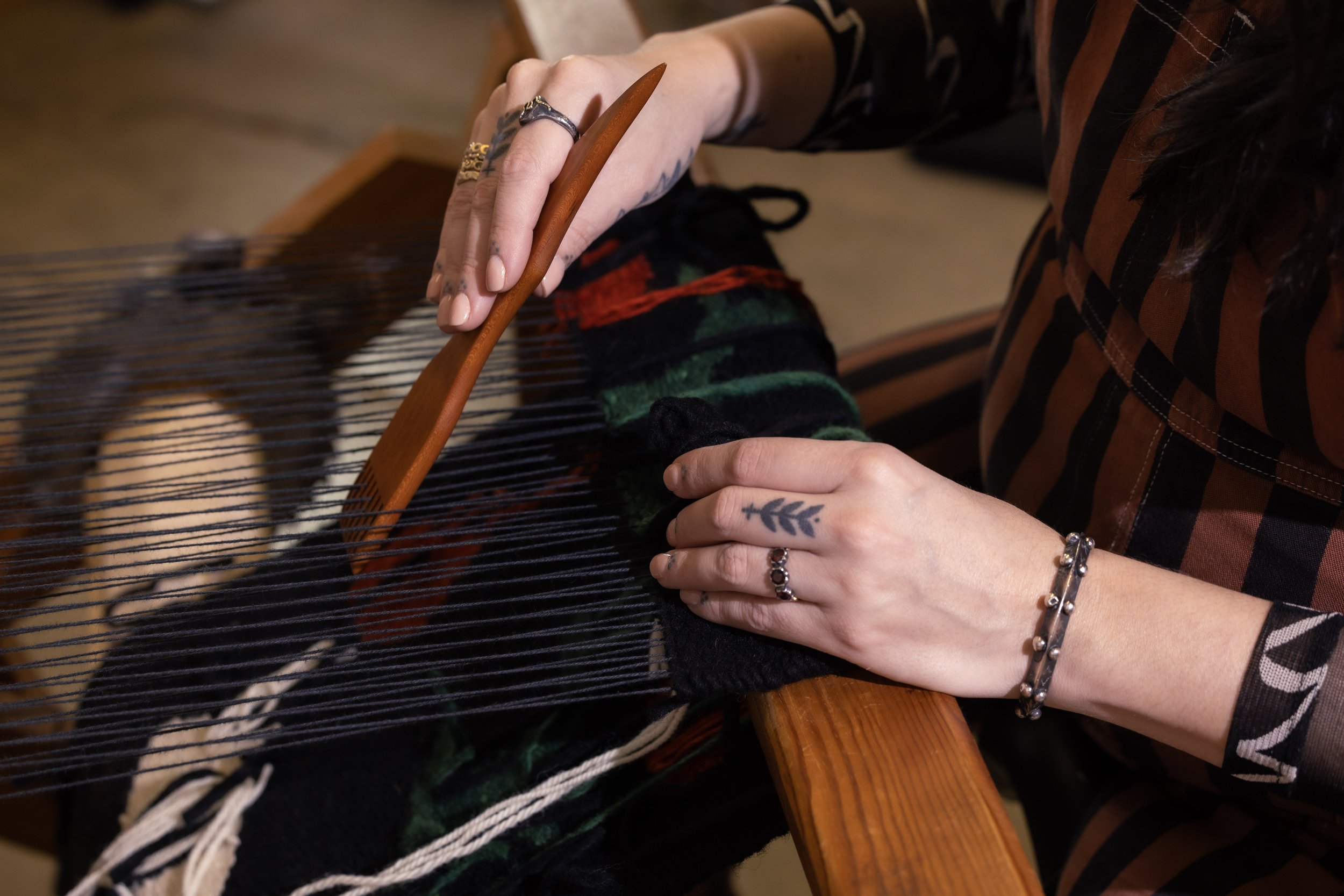
How It’s Made
Hand Forged Jewelry
Sustainability
The process in which jewelry is made is just as important as the final design. Zanny exclusively uses recycled gold and silver in each adornment. Her ability to forge, pour ingots, roll, and shape components for each piece, means she can recycle scrap metal from previous projects; twice, if not three to four times. Upon request, heirloom metals and stones are often given a new life, to be worn and treasured again and again. Zanny designs jewelry not just for aesthetic, but also being mindful of longevity and durability.
Ethical Sourcing
In addition to responsible metal practices, Zanny uses antique and post consumer gems as her primary resource. When possible, she also utilizes her Great Grandfather’s collection of old gem and rough stock, working with artisanal cutters based in the U.S. New stones are conflict free, sourced from transparent and ethical suppliers. Diamond melee is 100% reclaimed from previous jewelry pieces, that often Zanny sources herself, pulling the stones and recycling the metal for use in new pieces. Her motto is “giving new life to old bones” and she strives for as minimal impact on the environment with each and every adornment.

How it’s woven
Hand Woven Textiles
Slow Fashion
Zanny’s woven adornments are made of 100% natural fibers. She sources these from a variety of small businesses, such as locally farmed wool, fair trade cooperatives, and Indigenous shepherds in Mexico and the Four Corners region of the U.S. Wool, being an incredibly durable fiber, is also one of the most sustainable fibers to use for textiles. It is apart of the natural carbon cycle of Mother Earth and acts as a fertilizer when disposed. Using artisan made yarns creates a textile full of character and quality that look and feels good, but is also better for our environment.
The Studio
Zanny’s Weaving studio is located in East Austin at 2324 Art Studios. The studio is managed by Almost Real Things —a community of artist studios, murals, installations, and an art gallery. Here Zanny has the freedom to create among an inspiring group of artists and has the space for custom appointments and classes. Her studio also functions as her jewelry showroom, featuring her latest designs and collections. To schedule a studio visit or appointment click here.




